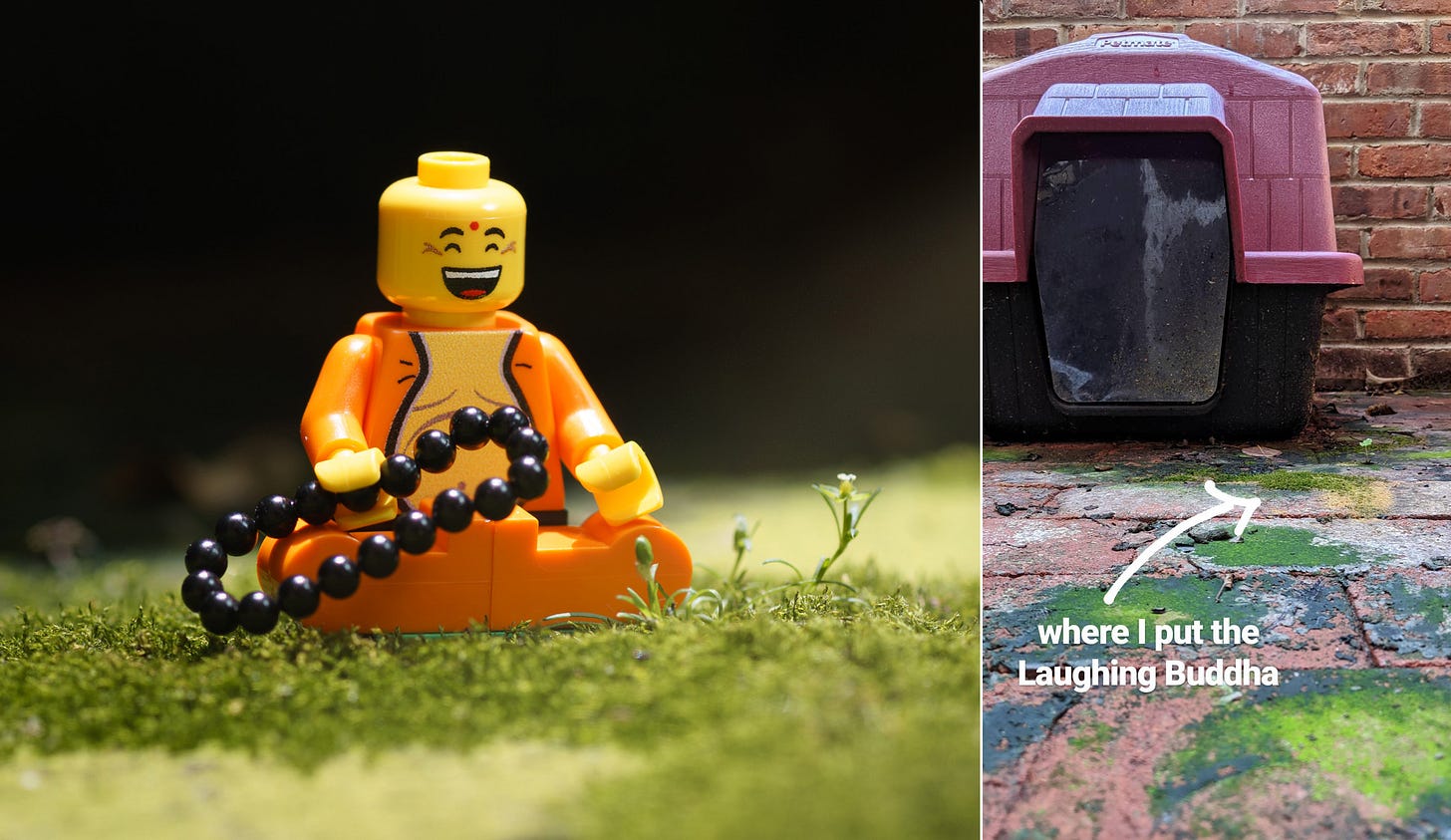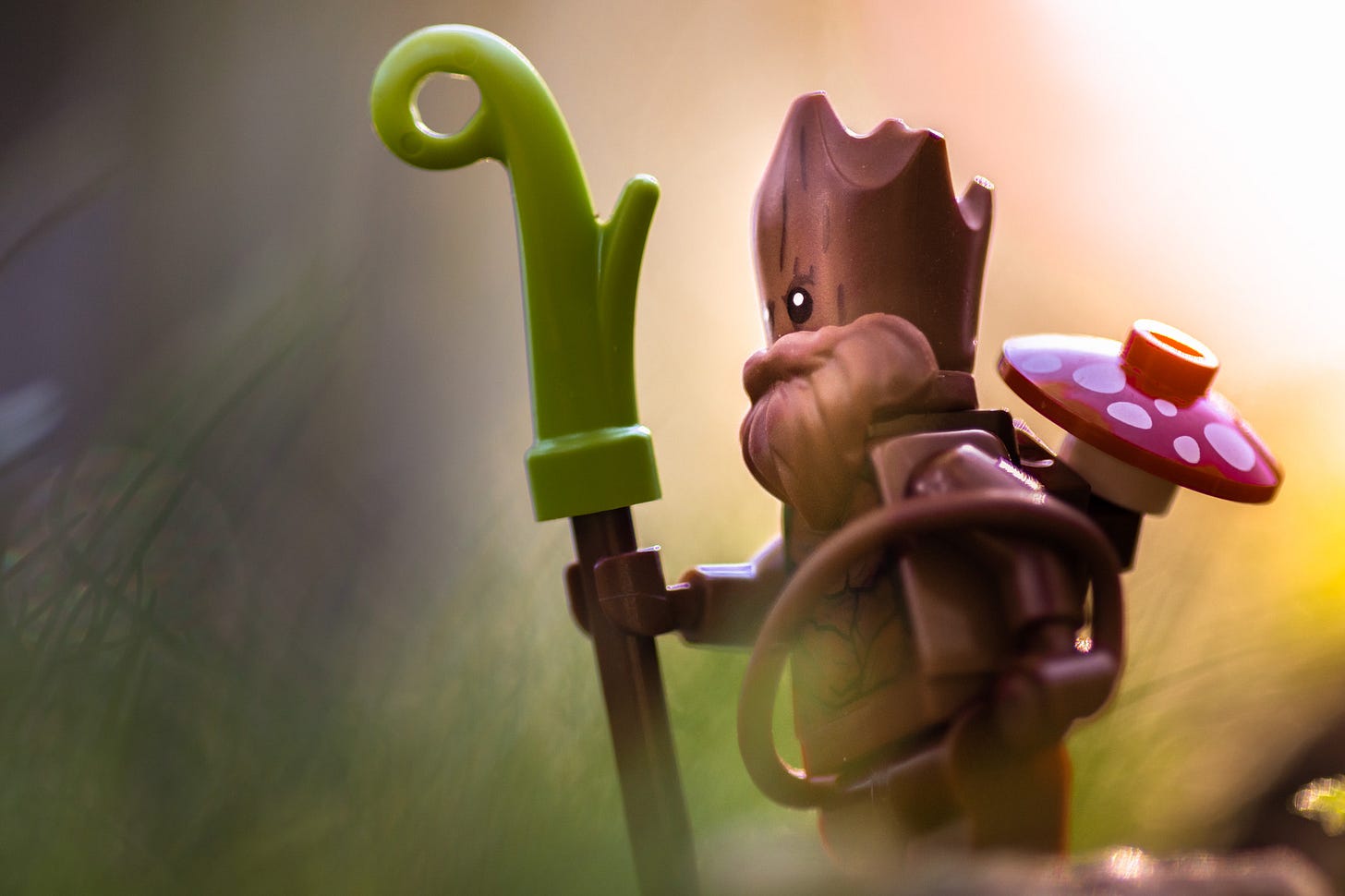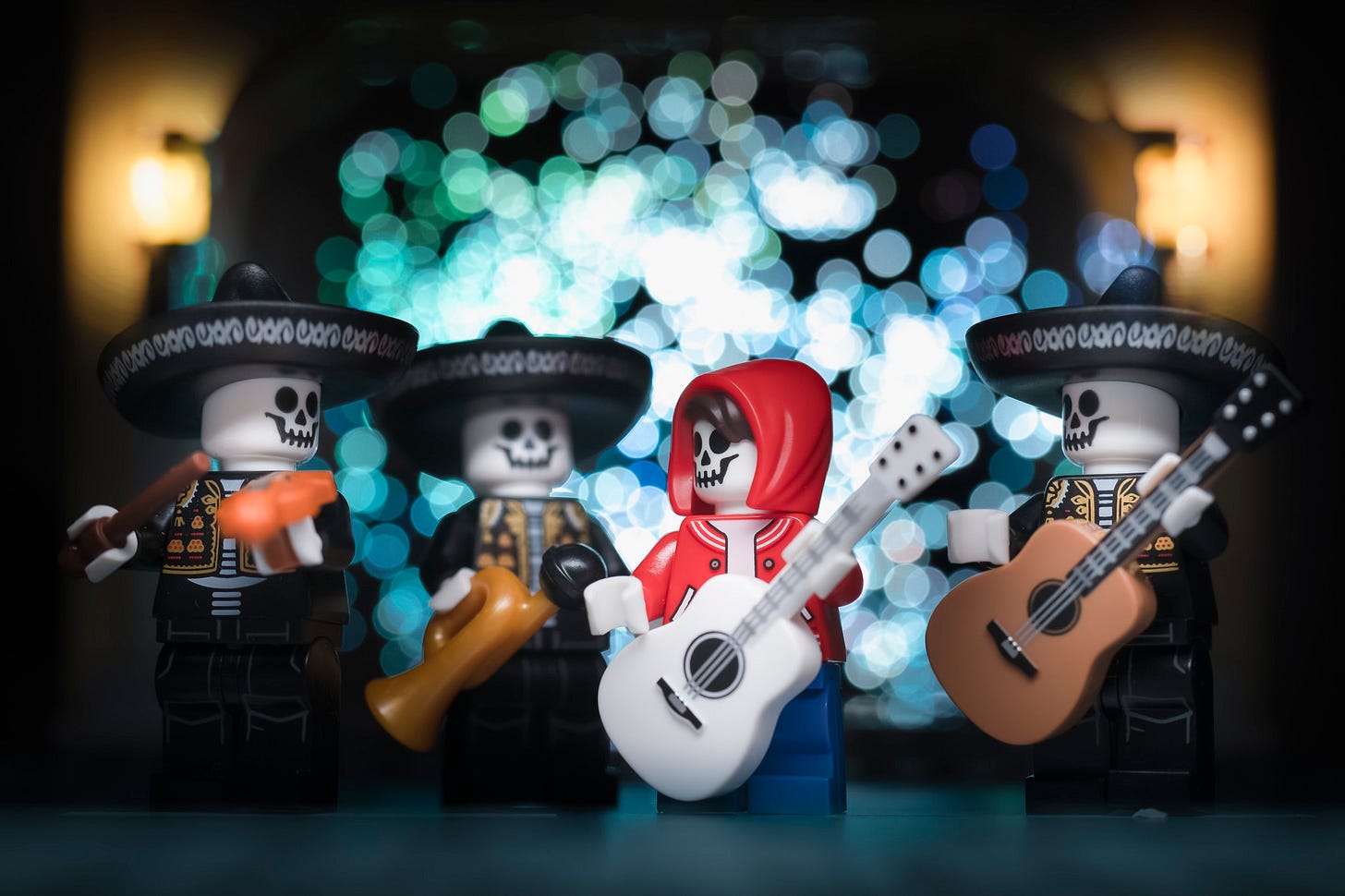Beware of bokeh
The overused shortcut to "good" photos
You’ve probably seen this style around a lot: a single toy against a soft, out-of-focus background. They can have a dreamy, otherwordly effect because we’re not used to seeing the world like that. We see it with a lot more clarity and context. Look around you right now: everything is sharp.
Our phones, the most ubiquitous cameras around, capture the world this way too: there’s a lot of the environment in those photos and they’re in focus front to back.
So for many toy photographers, especially beginners with phone cameras, this shallow depth of field is a “professional” look that they’d like to achieve in their work too.
The problem is that look can be boring and often, unprofessional. It’s pretty typical to miss focus or fail to include the entire subject. But more importantly for creative people, using a shallow depth of field for composing all the time can easily become a trap.
When I first upgraded my LEGO photography gear to include a 100mm f/2.8 macro lens several years ago, I went from shooting LEGO subjects with interesting environments to taking portraits of minifigs against pretty washes of nothingness.
I could shoot anywhere too without ever having to leave my neglected brick patio that was covered in patches of lichen and moss. (It wasn’t as pretty as that sounds.)
I knew I needed just a little bit of environment to work with because the long focal length, macro capabilities, and fairly wide aperture of my lens would diminish everything but the minifig in my photos.
I became a lot more prolific too, of course. Not having to scout for locations or build them out of LEGO or other materials is a real timesaver.
I didn’t have to bother composing either: I could just put down a minifig anywhere and not have to think about other elements in the frame at all.
Faster, easier shooting and more photos all sound great, but my work quickly became formulaic as a result: all minifig portraits with fill-the-frame, negative space, and shallow depth of field composition techniques.
I’d fallen into the shallow depth of field trap.
Regardless of whether the background had any importance, I would just throw it out of focus.
Here’s a low-angle shot I took years ago of a biker looking towards his destination from a cliffside road stop:
What cliffside, you might wonder? Right, you’d never guess I built a cliff with a tree growing out of it just by looking at this photo. I eliminated all the detail and texture of the background with a very shallow depth of field.
I relied way too much on a wide aperture to isolate the subject when I could have used so many other composition techniques like framing and contrast.
To illustrate this another way, here’s a pair of shots I took of a kid and a kitten at f/3.5 and f/10. Which one tells a better “story”?
In the first shot taken at f/3.5, it’s hard to tell where this is happening. In the second, it’s much clearer they’re in some sort of medieval kitchen. That communicates a more complete idea.
Several years ago though, I would have been mesmerized by the f/3.5 version. But now that I have a lot more experience, the environment is a bigger factor in my LEGO photography.
I build MOCs specifically for photography and scout outdoors for locations that have recognizable features like trees and rocks. I also choose shorter focal lengths like 24mm, 30mm, or 40mm to get a wider field of view.
Capturing the environment and the details in it means shooting with a deeper depth of field and using other composition techniques to separate the subject from the background.
That’s not to say I don’t go bokeh-hunting from time to time for my minifig portraits. It’s still magical and fun watching highlights transform into pretty discs or texture turn into patches of color.
Sometimes a nice, clean portrait of my custom characters is all I want so I’ll shoot at wide apertures and simplify the background. What I don’t want, though, is to become lazy about my photography again and rely solely on a shallow depth of field to make my subject stand out. I’m more creative than that.
If you feel like you’ve fallen into the shallow depth of field trap, you can get yourself out of it too. Challenge yourself to shoot at f/5.6 or f/8 for a week. Maybe go to f/16 if your lens can handle it without diffraction. For a real workout, shoot with your phone instead.
You’ll be forced to use color, shape, light, contrast, and a whole host of other composition techniques to create nice photos.
Here’s a great video by Jamie Windsor explaining why we fall into the trap and how to get out:
On the other hand, if you’re a phone photographer, experiment with a macro lens and see how composition gets much easier with a shallow depth of field as your main technique.
Just don’t get stuck either way.
Updates
One, I know I’m late with this essay. I’ve got a few paid projects going on which I’ll be wrapping up this weekend. You’ll see one of those on LEGO.com soon.
Two, the Stud Shooters community on Reddit and the LEGO Photo Club channel on Instagram are neck and neck at around 660 members each! Great to see so many people interested in the LEGO photography hobby!
I have my next “on assignment” activity lined up where I send a small LEGO set to a member to shoot a series of photos of and share with the community. Open call coming soon!
And three, tongwars, edgy_mando and I picked the winner of the Phone Photography Contest last month: frame_the_toys!
Check out the blog post with the 9 other nominees by the three judges. Good stuff!









